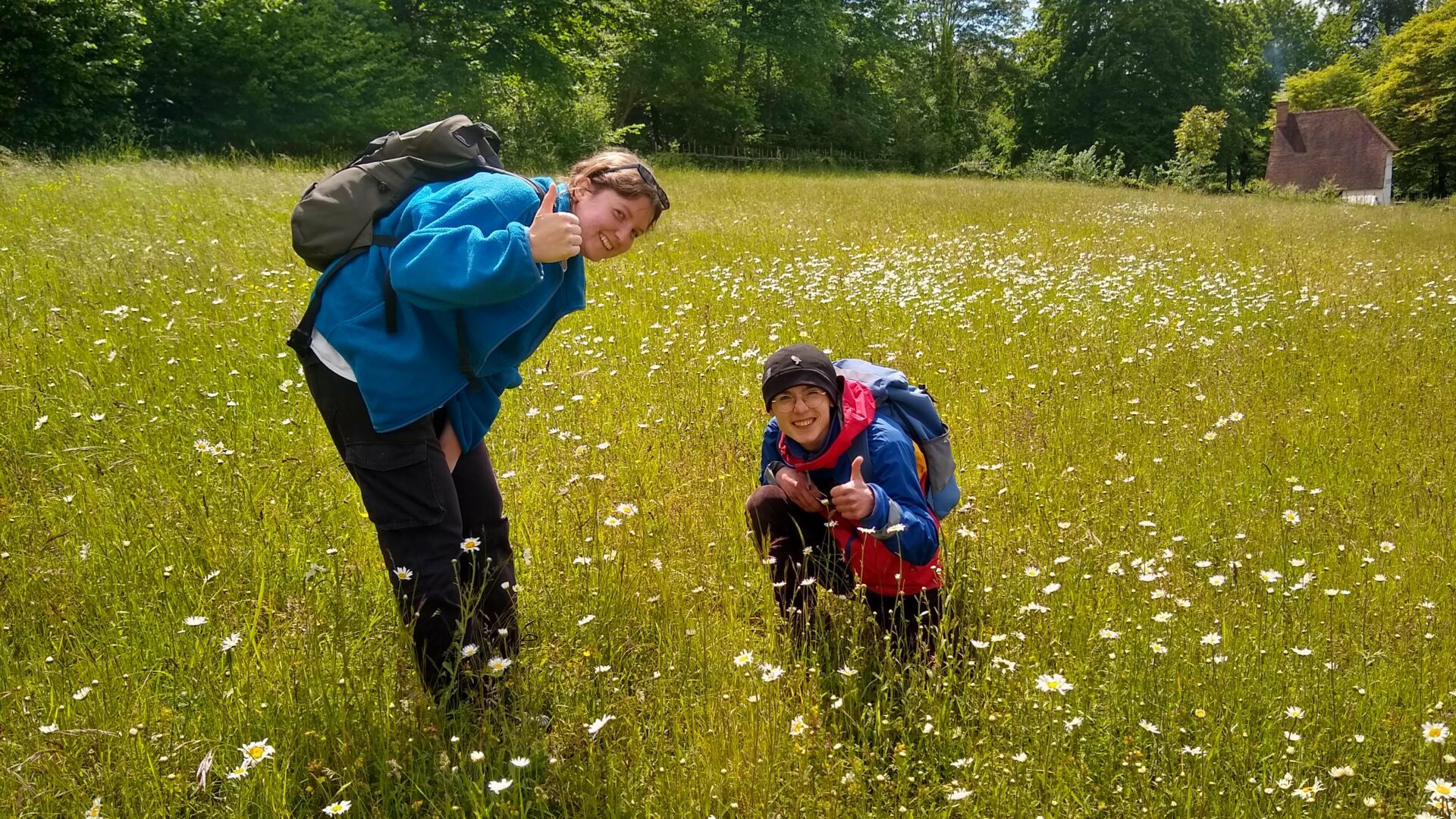
Look Wild: Young people use iNaturalist to support open-air museums
-
Date posted: 30/06/2022
-
Time to read: 8 minutes
South Downs youth volunteers have been leading the way with the rollout of iNaturalist in the National Park by adding important sightings to the NPUK LookWild project. One-off volunteer days have been taking place to give people aged 16-25 the opportunity to try volunteering and meet professional rangers for a day. It’s a great way to learn about potential career paths and ask experts questions about their experience. Participants are also learning about community science initiatives and improving their general knowledge of wildlife ecology. Because iNaturalist is an app on people’s personal phones, it’s something they can take home, share with friends and family, and use to build up a portfolio of observations. That’s the beauty of micro volunteering!
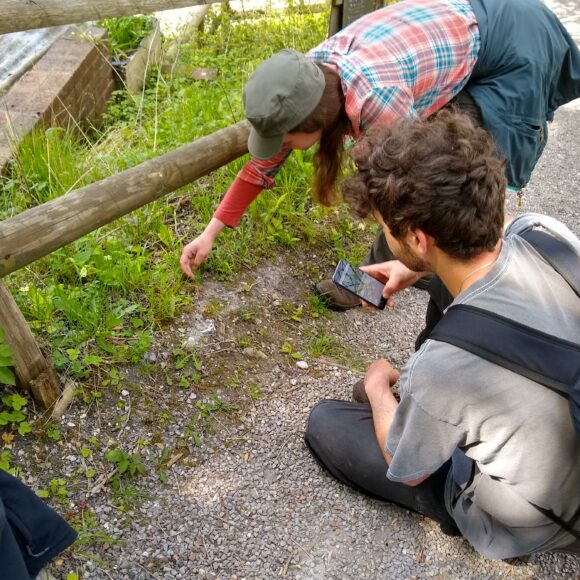
Open Air Museums
One of the most popular activities has been using iNaturalist to survey woodland and meadow habitats at unlikely locations – museums! In April, as part of the Brighton & Eastern Downs City Nature Challenge, young people visited Amberley Museum. The task was to observe wildflowers in a steep section of ancient woodland that long pre-dates the chalk quarrying heritage of the museum grounds. 180 observations were made of 82 species of plant, animal and fungus.
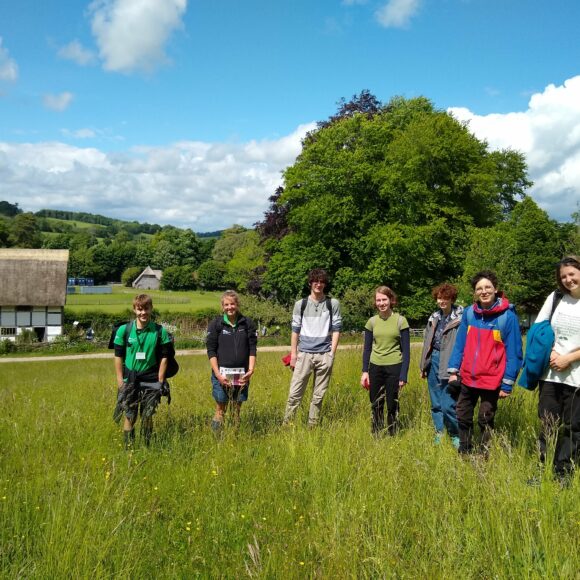
Weald and Downland Living Museum
In May another Youth Action day took place in West Sussex at the Weald and Downland Living Museum. The young people helped to survey a large area of meadow that is currently managed by the Museum’s volunteers with traditional scything and raking techniques. We made 210 observations and recorded 86 species. The day gave young people a taste of what ecological monitoring is like, as well as experiencing an open air museum rich in fascinating heritage. The observations will help inform the Museum’s understanding of how heritage land management shapes the ecological elements of the landscape.
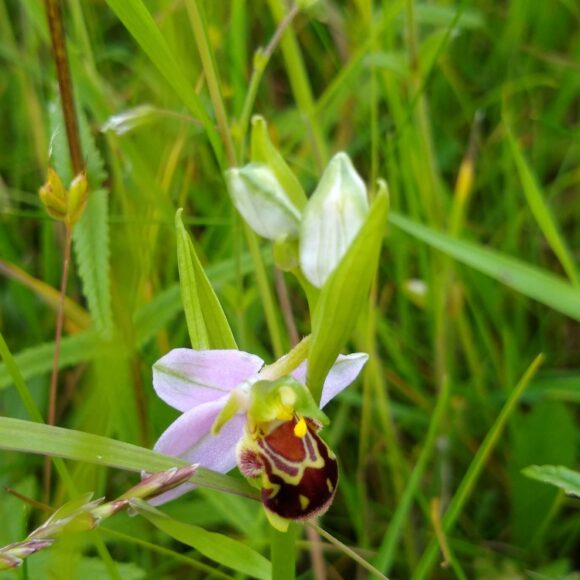
Chalky dreamscapes
Chalk grassland is one of the richest and rarest habitats in Europe. The ongoing maintenance of this precious landscape means the preservation of a rich diverse range of plant species and the invertebrates that depend on them. At the Weald and Downland Living Museum we recorded three species of orchid, with the stunning bee orchid the most common orchid observed.
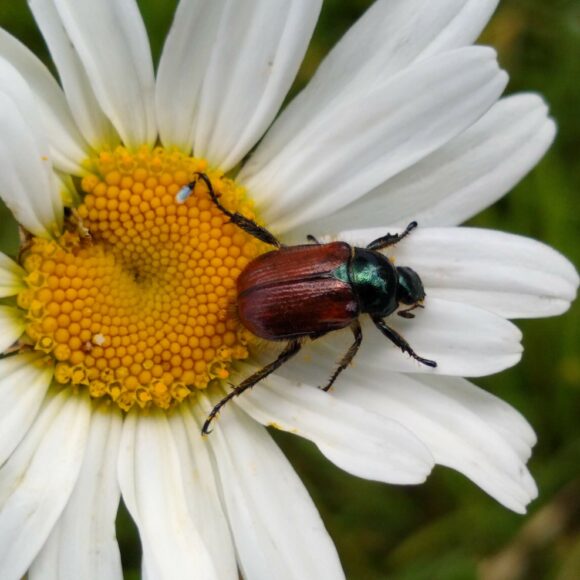
Interesting discoveries
Monitoring wildflower meadows also provides the chance to observe invertebrates. This species of chafer was one of the most attractive and common invertebrates found, often in the flowerheads of oxeye daisies. Find more information about South Downs Youth Action. Find more information about South Downs microvolunteering schemes.
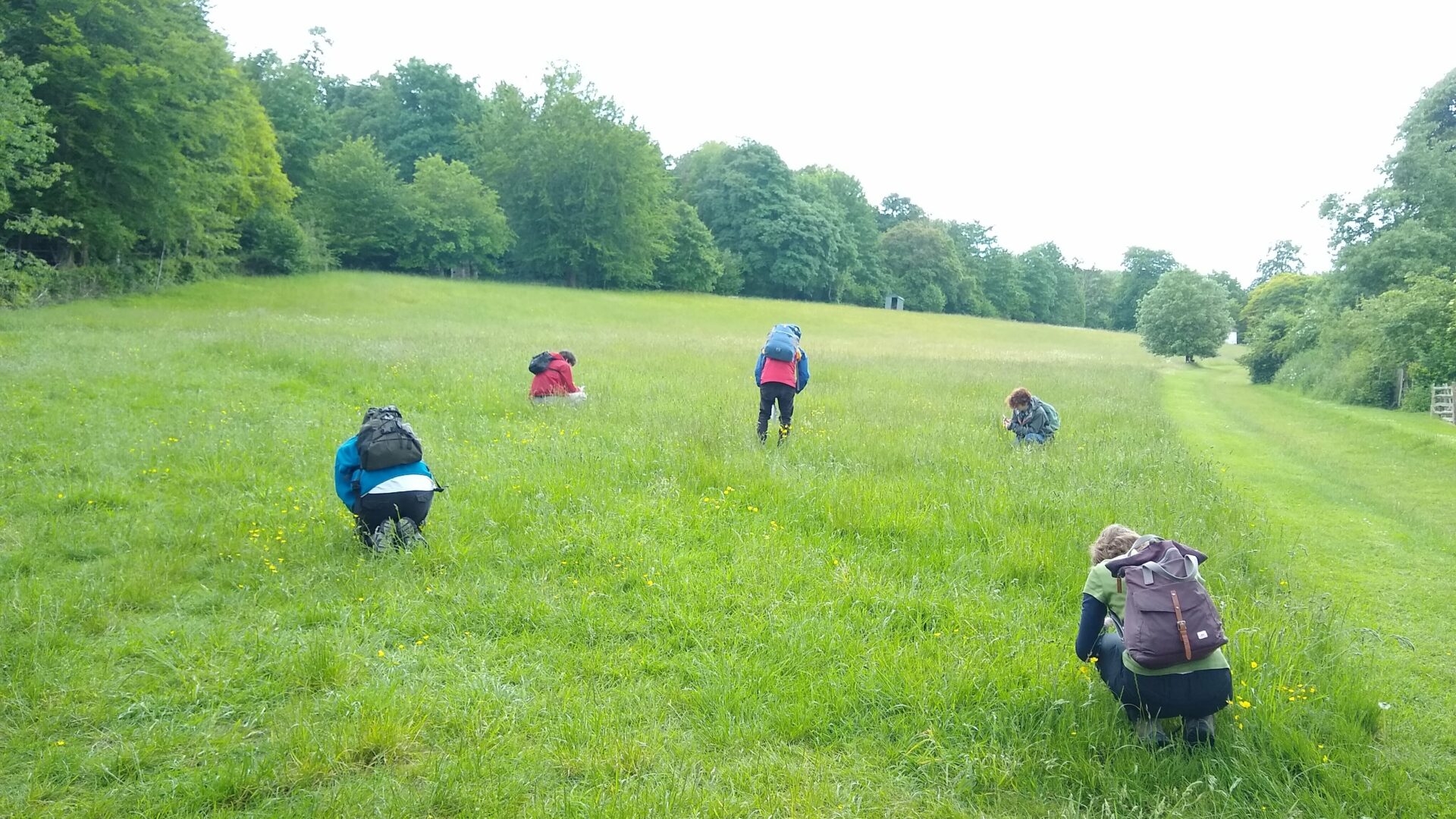
If you’ve been inspired to get out into nature, you can share any photos or observations with us and get featured on our social or our newsletter! Send your observations to connect@nationalparks.uk
Join i-Naturalist and start identifying nature near you today! LookWild is a brilliant citizen science project that helps contribute to our data and knowledge of wildlife and habitat health across the UK.
This Blog was written by Daniel Greenwood, Volunteer Development Officer, South Downs National Park Authority.